Getting rid of flies in the bathroom can be a nuisance, but with the right approach, it’s manageable. Flyermedia.net offers effective strategies for eliminating these pests and preventing future infestations, ensuring a clean and hygienic bathroom environment. Dealing with drain flies and other bathroom pests? Read on to discover solutions and keep your space pest-free with practical home remedies and preventive measures.
1. Understanding Drain Flies: The Pesky Bathroom Invaders
Drain flies, also known as moth flies or sewer gnats, are small, fuzzy insects often mistaken for fruit flies or gnats. Measuring about 0.3 cm, these pests are typically gray or brown, with light-colored wings. Their bodies and wings are covered with hair, and they have a unique wing-vein pattern. These flies thrive in sewage-rich environments like drains, sewers, and septic tanks but are commonly found perching on shower walls or hovering inside sinks. Despite their short lifespan of 8 to 24 days, drain flies reproduce rapidly, hatching up to 300 eggs in just 48 hours, leading to quick infestations.
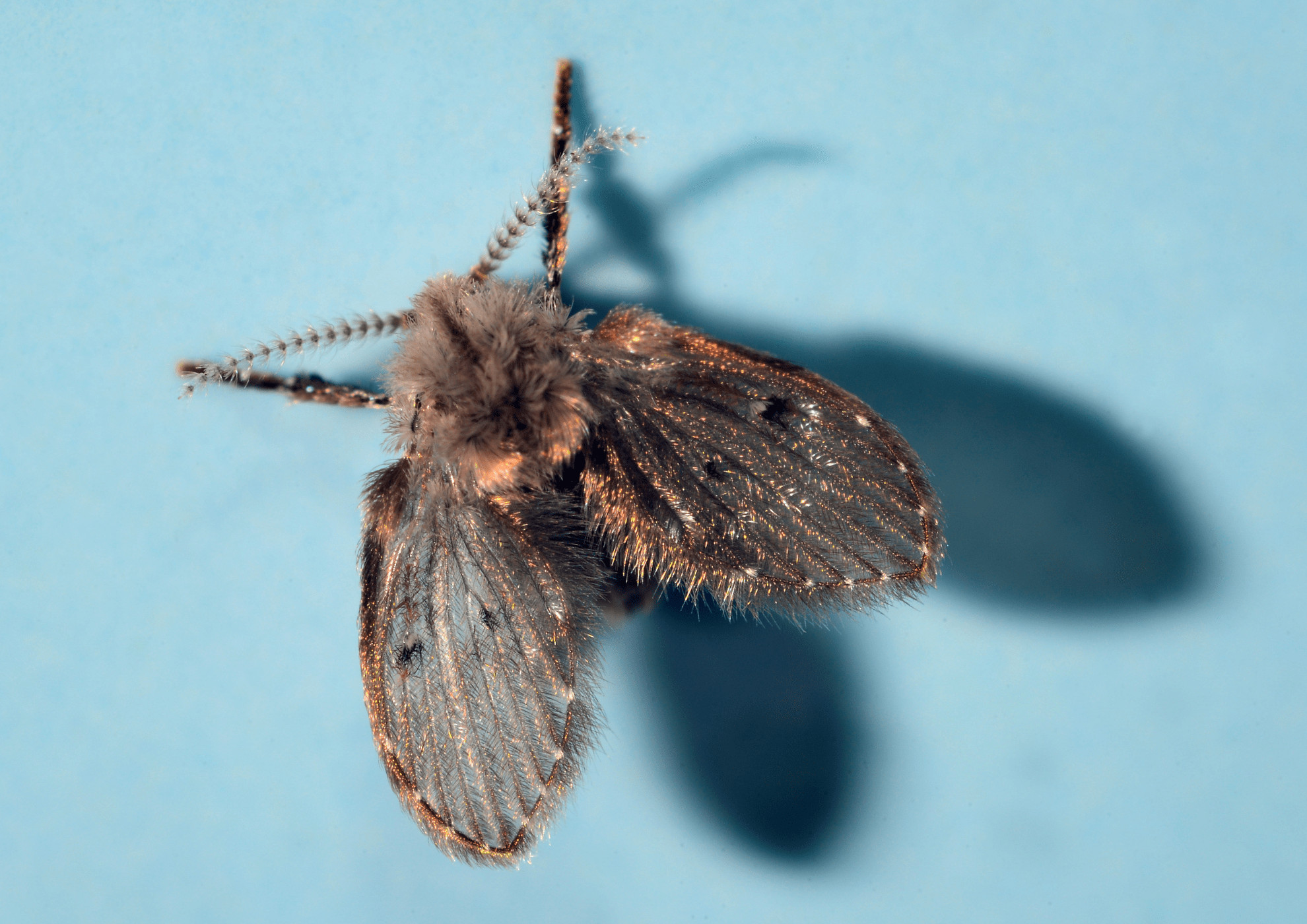 Drain Fly
Drain Fly
1.1. What Causes Drain Flies in Bathrooms?
Why are drain flies attracted to your bathroom? These tiny insects seek stagnant water, especially in pipes and drainage locations, where organic matter accumulates. According to research from the University of Florida, drain flies are drawn to the moist, decaying organic material that builds up in drains, providing an ideal breeding and feeding ground. This accumulation provides the perfect environment for drain flies to lay their eggs and for the larvae to thrive.
2. How to Identify Drain Flies: Detecting the Infestation
Spotting a few small, moth-like insects in your bathroom might indicate a drain fly problem. But how do you confirm they’re breeding in your drains rather than coming from outside? Here are two straightforward methods to check for drain flies in your pipes.
2.1. The Duct Tape Test
One of the easiest ways to check for drain flies is by using duct tape. Simply seal your drain opening with a piece of duct tape overnight. As drain flies emerge from the drain, they’ll get stuck on the tape.
This method helps eliminate some drain flies and gives insight into the infestation’s extent. Repeat this process for several nights to gauge the severity of the problem.
2.2. Inspecting the Drain Cover
The accumulation of organic matter at the drain opening is an ideal site for drain flies to lay eggs. Remove the drain cover and check for larvae.
To check for drain fly larvae, take off the drain cover and remove some of the slimy buildup from the sides. If you find thin, tube-like structures within the slime, they might be drain fly larvae. If you don’t find any larvae but suspect an infestation, the eggs might be deeper in the pipes.
3. Effective Methods to Get Rid of Drain Flies
Getting rid of drain flies can be challenging due to their water-repellent body hairs and the resistance of their eggs to bleach. Eradicating these pests requires eliminating their food source: moist, decaying organic matter. Making their feeding and breeding grounds inhospitable is crucial for stopping their reproduction.
3.1. Method 1: Boiling Water
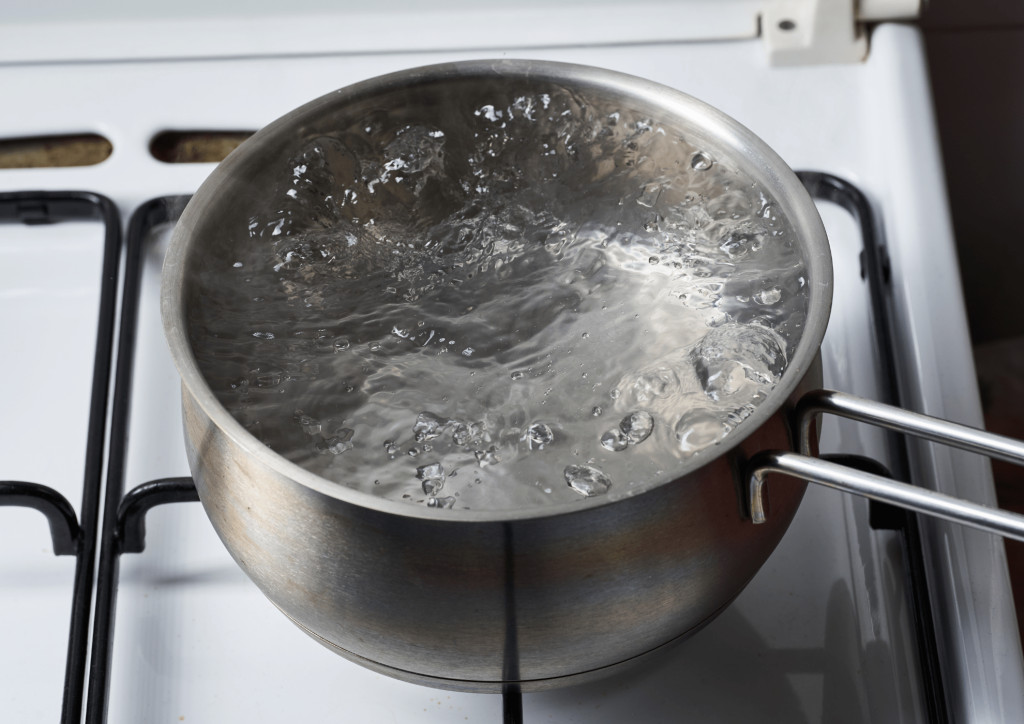 Pot of Boiling water
Pot of Boiling water
The simplest way to clear your drain of organic matter is by using boiling water. The high temperatures effectively dissolve dirt and grime buildup in your pipes.
Pour a pot of boiling water down your drain once or twice daily and repeat this process for a week to prevent the flies from returning.
3.2. Method 2: Baking Soda, Salt, and Vinegar
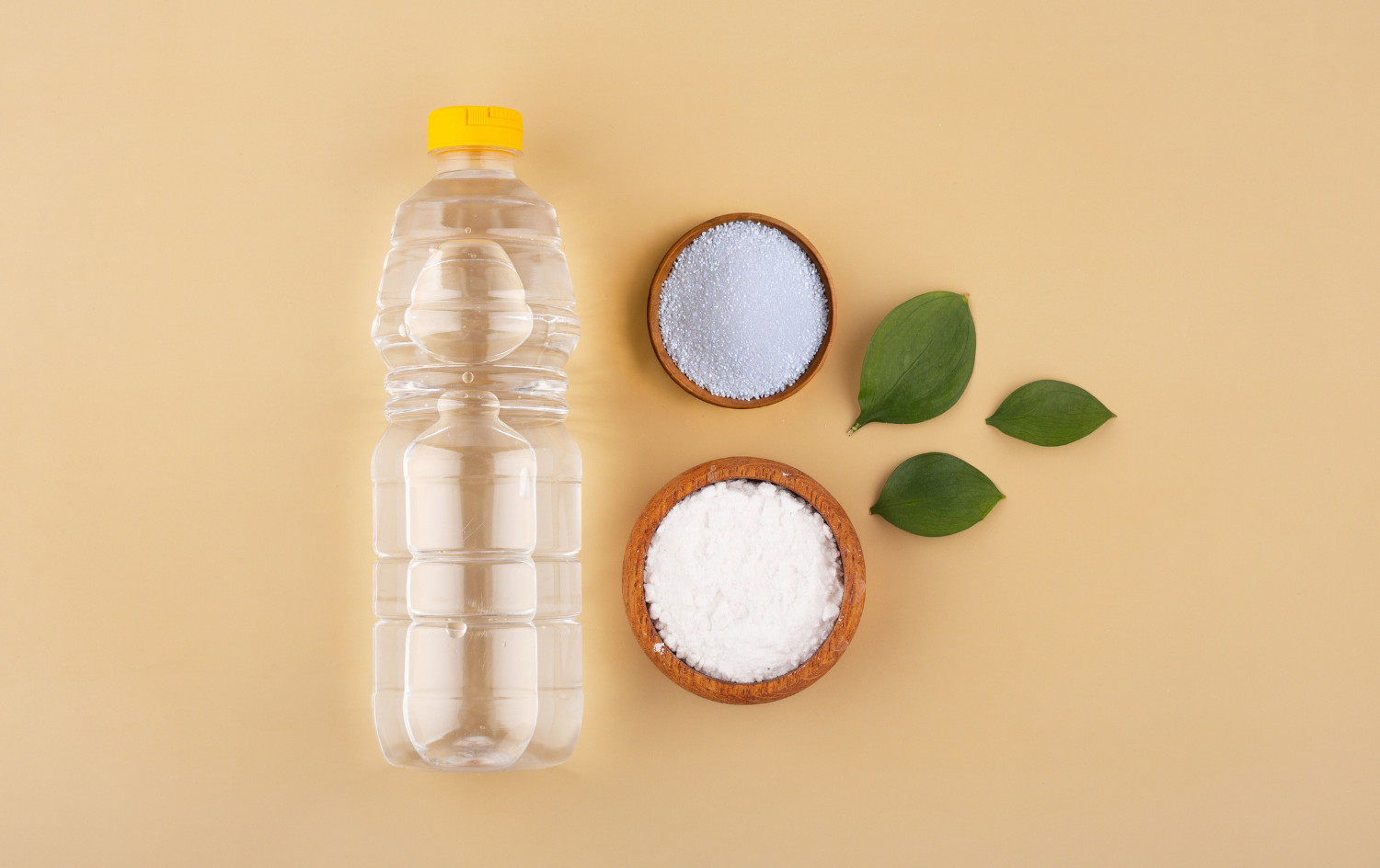 Baking soda, salt and vinegar
Baking soda, salt and vinegar
Baking soda, salt, and vinegar are pantry staples that make a great cleaning solution for your pipes. The chemical reaction between baking soda and vinegar can clean a wider surface area than boiling water alone.
Directions:
- Mix ½ cup of salt with ½ cup of baking soda and pour the mixture down the drain.
- Pour 1 cup of vinegar into the drain. You should see foam forming as the vinegar reacts with the baking soda.
- Leave it overnight without rinsing. In the morning, pour boiling water down the drain.
3.3. Method 3: Soap, Water, Sugar, and Vinegar Trap
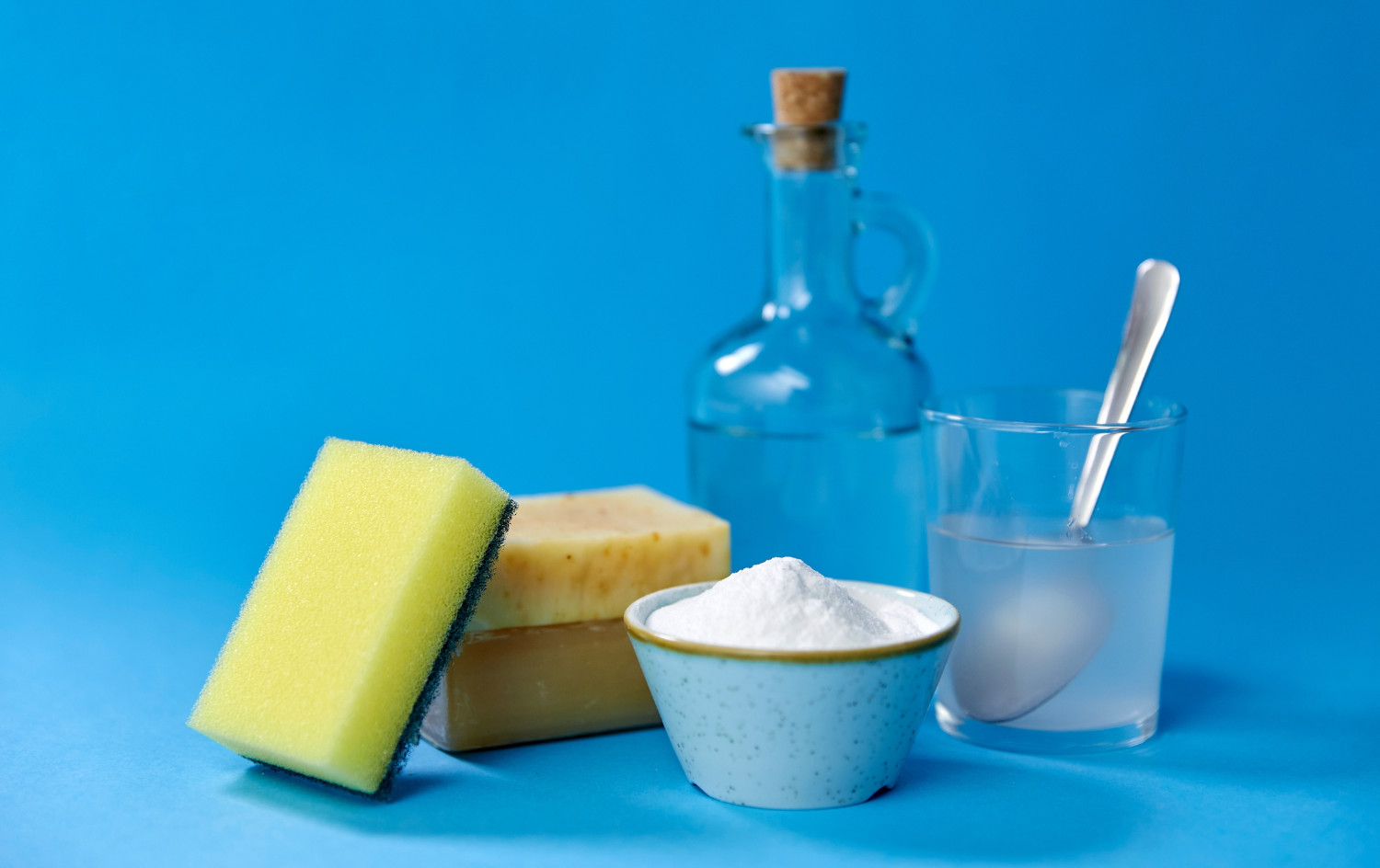 Soap, water, sugar and vinegar
Soap, water, sugar and vinegar
Create a sweet trap to lure drain flies. This mixture attracts the flies, and the soap traps them, preventing their escape.
Directions:
- Combine equal parts of sugar, water, and white vinegar in a bowl.
- Add 5 to 10 drops of liquid dish soap.
- Place the bowl beside the drain overnight or for up to a week.
3.4. Method 4: Drain Cleaner
Drain cleaners can effectively eliminate drain flies in pipes. Different products have different instructions, so read and follow the product labels carefully. For example, Selleys Pipe & Drain Declogger can dissolve hair and grease, eliminating the organic matter drain flies thrive on.
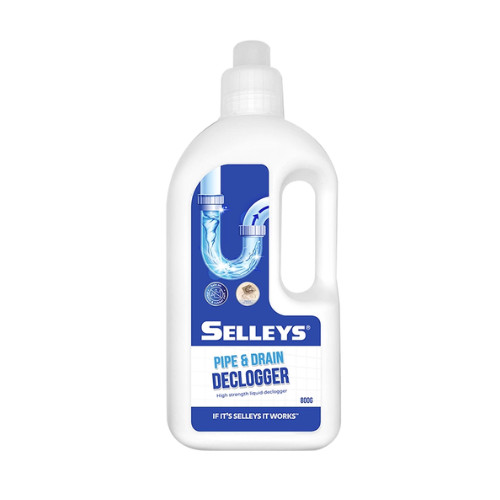 Selleys Pipe & Drain Declogger
Selleys Pipe & Drain Declogger
Directions:
- Pour a suitable amount of drain cleaner down the drain.
- Let the solution sit for 4 – 8 hours, ensuring the drain isn’t used during this time.
- Flush the drain with water to wash away the solution.
Note: Some drain cleaning products are potent. For safety and to prevent pipe damage, check if the products can be used more than once.
3.5. Method 5: Mothballs
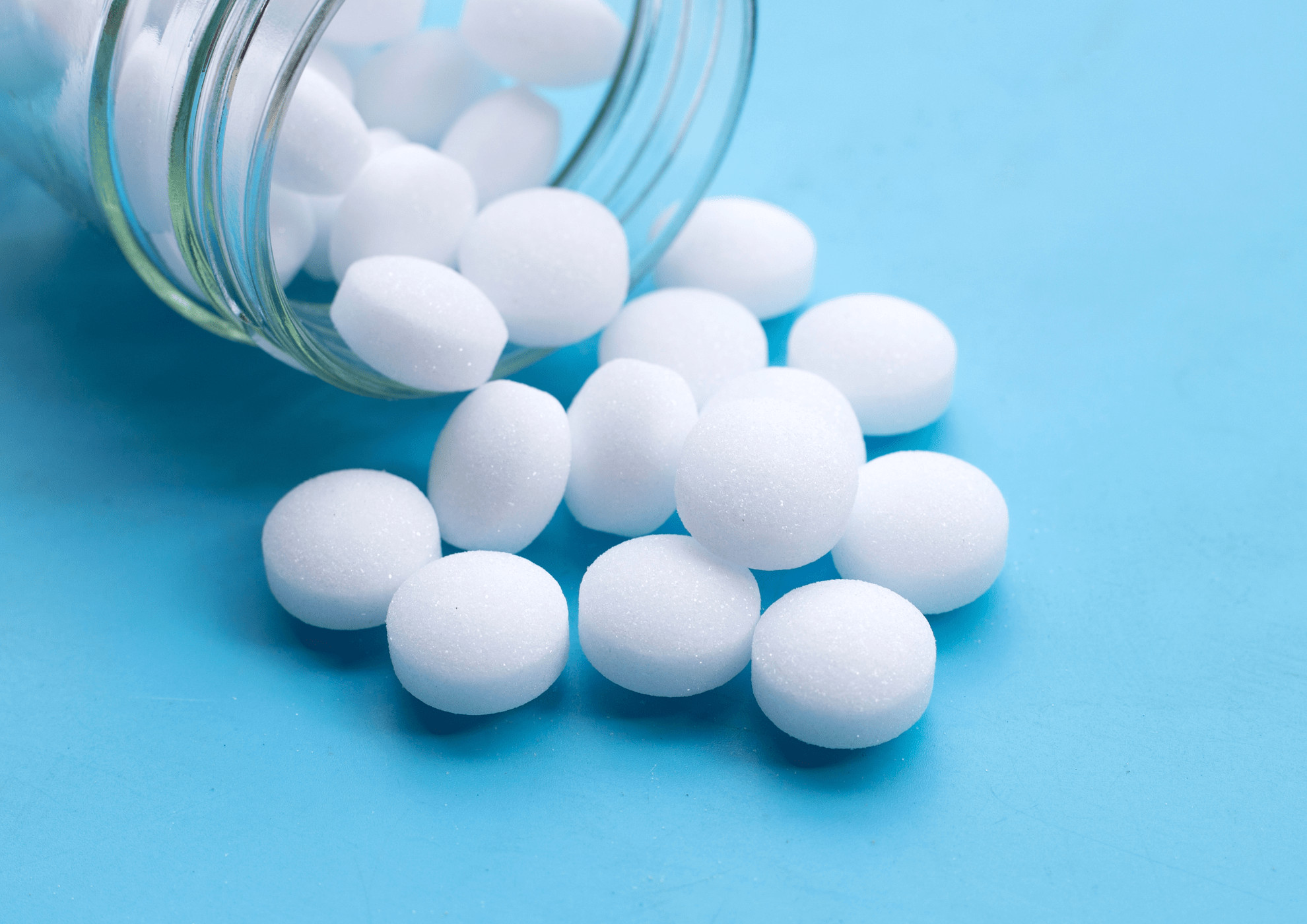 Mothballs
Mothballs
Since drain flies are a species of moth, mothballs provide a straightforward solution. The active ingredient in mothballs, naphthalene, is toxic and effectively kills drain flies.
Directions:
- Place a few mothballs over the opening of your drain.
- Cover the drain opening and the mothballs with a clear container for at least 2 weeks.
Tip: When using this method for a shower drain, push the cover and mothballs aside before showering to allow water flow. Replace them afterward.
4. Preventing Drain Fly Infestations: Proactive Measures
Prevention is better than cure. Instead of dealing with an infestation, keep these pesky flies away by preventing them from laying eggs. Here are tips to reduce the chances of drain flies infesting your pipes.
4.1. Regular Cleaning of Sinks, Drains, and Pipes
Maintaining clean and clear drains is crucial for preventing drain fly infestations. These pests feed on organic matter found within pipes, so drain cleaning should be part of your regular home cleaning routine.
Use a stiff cleaning brush and dish soap or vinegar to scrub the drains and sinks thoroughly. Rinse with boiling water to flush out any remaining debris.
4.2. Eliminating Stagnant Water
Drain flies thrive in moist environments, particularly where organic matter is present. Eliminate stagnant water or damp spots in the house, such as water in shower drains and on moist soil in houseplants.
Removing moisture sources significantly reduces the likelihood of a drain fly infestation.
4.3. Sealing Infrequently Used Drains with a Stopper
Prevent drain flies from breeding in infrequently used drains by closing them off with a stopper. This makes it difficult for the flies to find a breeding ground, eliminating the possibility of an infestation.
5. Frequently Asked Questions (FAQs) About Getting Rid of Drain Flies
5.1. Are Drain Fly Infestations a Cause for Concern?
While drain flies don’t bite or sting, they reproduce rapidly and in large numbers, which can be a nuisance and costly to remove. While they don’t carry diseases, they may carry bacteria in large quantities, making it advisable to get rid of them as soon as possible.
5.2. Where Do Drain Flies Come From?
Drain flies are attracted to places with organic matter or stagnant water, such as:
- Kitchen and bathroom sinks
- Shower and bathtub drains
- Sewers
- Septic tanks
- Soil containing sewage
5.3. Will Drain Flies Go Away On Their Own?
No, drain fly infestations often don’t go away on their own. With a short breeding time of 48 hours, they reproduce quickly, and if stagnant water is left unchecked, they will continue to breed.
5.4. Will Bleach Kill Drain Flies?
Bleach can kill some drain flies, but it won’t get rid of an infestation. Drain fly eggs have a protective layer resistant to bleach, allowing the eggs to hatch even after contact with the solution.
5.5. What are the best natural remedies to eliminate drain flies?
Natural remedies like boiling water, baking soda, salt, and vinegar are effective in eliminating drain flies. Regularly flushing drains with these solutions helps break down organic matter and disrupts the breeding cycle.
5.6. How often should I clean my drains to prevent drain flies?
Cleaning your drains at least once a month is recommended to prevent drain fly infestations. Regular cleaning removes the organic buildup that attracts and sustains these pests.
5.7. Can drain flies cause any structural damage to my plumbing?
Drain flies themselves don’t cause structural damage, but their presence indicates organic buildup in your pipes, which can lead to clogs and other plumbing issues if left unaddressed.
5.8. What signs indicate a severe drain fly infestation?
Signs of a severe infestation include seeing numerous flies around drains, sinks, and showers, as well as a persistent musty odor coming from the drains.
5.9. Is professional pest control necessary for drain flies?
Professional pest control is usually unnecessary for drain flies. Most infestations can be handled with regular cleaning and the home remedies mentioned above. However, for severe or persistent issues, consulting a professional is advisable.
5.10. Are drain flies more common in certain types of plumbing systems?
Drain flies are equally common in different plumbing systems as long as there is organic matter buildup and stagnant water. Regular maintenance and cleaning are key to preventing infestations regardless of the plumbing type.
6. Why Experience, Expertise, Authoritativeness, and Trustworthiness (E-E-A-T) Matter for Drain Fly Control
When it comes to dealing with pests like drain flies, it’s essential to rely on trustworthy and authoritative information. E-E-A-T is a set of guidelines Google uses to evaluate the quality of content. Here’s why it’s important:
- Experience: Sharing practical, hands-on advice based on real-life experiences is invaluable. Knowing what has worked for others can guide your approach.
- Expertise: Expert knowledge ensures accurate and effective solutions. For instance, understanding the biology of drain flies helps target the root cause of the infestation.
- Authoritativeness: Reputable sources and endorsements from trusted organizations add credibility.
- Trustworthiness: Honest, reliable information builds confidence. It’s crucial to provide solutions that are safe for both your home and family.
7. Additional Tips for a Fly-Free Bathroom
- Maintain Cleanliness: Regularly clean your bathroom to eliminate potential breeding grounds for flies.
- Ventilation: Ensure proper ventilation to reduce moisture levels.
- Inspect Regularly: Check your drains and plumbing for leaks or buildup.
- Use Screens: Install screens on windows and doors to prevent flies from entering.
8. Your Next Steps: Flyermedia.net Resources
Dealing with drain flies can be frustrating, but with the right information and methods, you can effectively eliminate these pests. For more detailed guides, expert advice, and additional resources on pest control, visit flyermedia.net. Learn how to maintain a pest-free environment and keep your bathroom clean and hygienic. Don’t let drain flies take over your home; take action today with the help of flyermedia.net.
Address: 600 S Clyde Morris Blvd, Daytona Beach, FL 32114, United States.
Phone: +1 (386) 226-6000.
Website: flyermedia.net.
